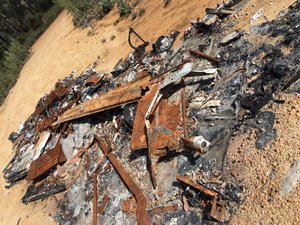

“We wanted to come out with the formulation to filter the flue gas carbon (the gases produced by burning). This is why diesel is unnecessary.”Īlthough it does create toxic emissions such as dioxins (a highly toxic compound and serious environmental pollutant) and furans (a flammable, toxic liquid), Tee, who has spent most of his life working in the water industry, has created a filtration system to prevent these emissions from being discharged into the atmosphere. If it is used 24 hours continuously, it can go up to 1,000☌.

“Within the first hour, it can go up to 150☌. So, the longer the machine is in operation, the higher the internal temperature will be, Tee explains. The heat generated from the process is sustained only within the chamber. When waste is put into the Asher, it ends up in the thermal degradation chamber where it will decompose via the pyrolysis process. Additionally, the return on investment can be as high as 40% or within 2.5 years in certain cases,” says Pang. For the same capacity, the required capex for the Asher is only RM137 million. “A conventional 1,000-tonne capacity incinerator requires a capex of around RM750 million. In fact, the capital expenditure required for Asher is not more than 20% of that required for a conventional incinerator on a tonne-for-tonne basis, he says. Executive director Pang Swee Lei tells Enterprise that in designing the Asher, Tee seems to have thought of everything from cost to sustainability. It uses integrated solar panels to operate continuously and is self-sustainable.Īsher is exclusively distributed by Pamarai Sdn Bhd. By 2011, he had designed the first prototype for Asher, a 6-metre-tall machine that can reduce most solid waste materials to ash. It was a eureka moment for Tee and sent him back to the drawing board. The irreversible process involves a change in the materials’ chemical composition and it is commonly used to convert organic materials into solid residue containing ash, carbon and small quantities of liquids and gases. One of them suggested that he try pyrolysis - the process of chemically decomposing organic materials at elevated temperatures in the absence of oxygen.

One day, he met with a few friends who were university professors and asked them if there was a way to burn garbage without using diesel. His peers thought he was spinning his wheels in mud and that there was no solution to the problem.īut Tee is nothing if not resolute.
#Burn trash without water how to
He decided to take matters into his own hands and racked his brains day and night to figure out how to build an incinerator that could operate without using fuel. He thinks it is a bad idea to use so much resources to collect the waste and spend even more to reduce it to something manageable. Tee, 73, is not a fan of incinerators as they require diesel, which is costly. Today, none of them are in working condition,” he points out wryly.

Subsequently, in 2011, four incinerators worth RM188 million were built in Langkawi, Cameron Highlands, Pangkor and Tioman. “In 2006, a government-linked company announced that it would be building mobile incinerators powered by alternative fuels to solve this problem. To top it off, such projects have been very costly, says Roland C S Tee, Pyro Plasma Sdn Bhd executive director. The favoured solution seems to be waste-to-energy (WTE) incinerators but previous incinerator projects have not been successful. The build-up of solid waste is causing tremendous land and air pollution and no one seems to be able to come up with an ideal solution, but not for lack of trying. Government statistics reveal that Malaysia generated 42,672 tonnes of waste daily in 2017, which is expected to rise to 44,888 tonnes per day as the population increases, especially in cities. Malaysia generates a lot of solid waste - a crippling problem, especially in light of recent revelations that the country has become the global dumping ground for plastic waste after China decided to forego the honour.


 0 kommentar(er)
0 kommentar(er)
